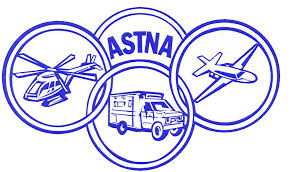Critical Care Transport Nurses Day is celebrated annually on February 18 and recognizes the varied and fast-paced world of this branch of nursing.
Sponsored by the Air & Surface Transport Nurses Association (ASTNA), Critical Care Transport Nurses Day showcases the distinct field of transport nurses. While any nurse is always in motion, critical care transport nurses are actually doing their job while the patient is being transported.
Giving accurate, empathetic, and multilayered care while potentially in a moving vehicle like an ambulance or in flight on an airplane or helicopter offers an entirely new set of standards. Critical care transport nurses work in environments that are rarely the same and are constantly changing. Supplies might be different or arranged in a different order. Teams are likely varied and have to adapt to each other and to the motion of the transport they are in.
Some care is given in dire conditions. Transporting a seriously ill patient to receive initial care after an accident, bodily injury, or a health event like a heart attack or stroke is filled with pressure. Critical care transport nurses can work in the military moving gravely injured soldiers. They might be called to help deliver a baby who couldn’t wait for the arrival at a birth facility or hospital.
Still other critical care transport nurses attend to patients when they are stable, but being moved between facilities for additional testing or to receive therapies.
Critical care transport nurses are there to make sure every second of available time is used to help the patient. In the time it takes to move a patient from one area to a hospital or facility, life-or-death changes occur.
No matter the environment, critical care transport nurses have to work well on a team and be confident and experienced enough to make accurate split-second decisions about providing the best care. That means they need to assess physical and vital signs, equipment readings, and listen to the team all at the same time.
As a critical care transport nurse, critical thinking skills are essential. You’ll work in high-pressure emergency situations more than you will work with stable patients. Having emergency care experience before deciding on this career path is essential. Once you have decided and have earned any required hours, becoming certified will help you remain current with the latest protocol and evidence-based practices. In general, nurses in this field will become either a certified transport registered nurse or a certified flight registered nurse.
This career is exciting and requires a broad skill set and someone who works well under this type of pressure. If this sounds like a good career match for you, jobs in this area are growing.
- WOC Nurses Week Highlights Specialty - April 16, 2024
- Honoring Radiology Nurses Day on April 12 - April 12, 2024
- Travel Offers New Career Possibilities - April 8, 2024



